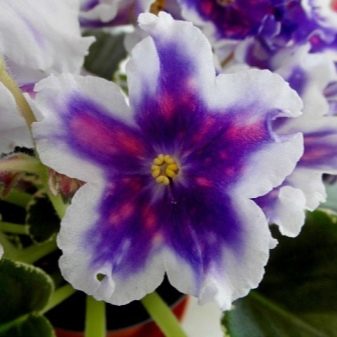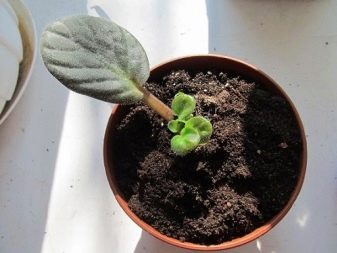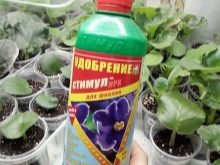Violet "VaT-Tsar Peas"

Saintpaulia (Gesneriaceae family) is one of the most common indoor plants. Very often it is called a violet, but this culture has nothing to do with the Violet familyme, if you do not take into account the similar shape of the flowers. Due to the fact that many people are more accustomed to call Saintpaulia a violet, when describing the "VaT-Tsar Pea" variety, this very word will be used.

Breeding history
After the appearance of saintpaulia in Europe at the end of the 19th century, it became a desirable object for breeders around the world. Today, more than thirty thousand varieties of these charming plants are known. Thanks to the work of breeders, various varieties have appeared that differ in color of flowers, their type, appearance of leaves, and sizes. As a result, every lover of indoor flowers has the opportunity to choose exactly the plant that is ideal for him in all respects and will harmoniously fit into a particular interior.


Tatiana Valkova is a breeder from the city of Shakhtersk. She has been growing indoor plants for more than twenty years, constantly taking part in exhibitions. Even hostilities on the territory of Ukraine did not force her to give up her beloved business. Tatyana has created many wonderful varieties of violets, such as "VaT-Dark Wine", "VaT-Sun in the Palm", "VaT-Bird of Happiness", "VaT-Snow White", "VaT-Alien" and many others.
It should be clarified that the capital letters in front of the variety name most often mean the initials of the breeder.


Description of the variety
Violet "VaT-Tsar Pea" is a standard-sized plant with a neat rosette. The spectacular flowers are white with purple fingers on all petals. At the same time, bright pink peas seem to crumble against a purple background. The flowers are quite large (up to 6-7 centimeters), collected in a small hat, bloom profusely and for a long time. The violet has large, even leaves with a beautiful cream border. Sports of this variety (babies that appear as a result of gene mutations and do not inherit the maternal coloration) bloom in 40 percent of cases without a pink pattern on the petals.


Landing rules
If you decide to transplant such a violet, first carefully read the recommendations of experienced florists.
- Choose not very large pots for violets. Ideally, the diameter of the pot is 3 times smaller than the rosette of the plant.
- Small plastic cups are suitable for children and leafy cuttings. For an adult plant, choose a clay or plastic pot.
- Ready soil for Saintpaulias can be poured into the planting container. You can also make a mixture of leafy soil, turf, coniferous soil and peat in a ratio of 3: 2: 1: 1. You must add some kind of baking powder to this composition: perlite, vermiculite, dried or fresh sphagnum moss (it also acidifies the soil ).
- It is necessary to renew the earthen mixture every 2-3 years.


Care
So that your violet grows well and blooms for a long time, it is necessary to take into account the main factors affecting the development of the plant.
- Lighting. This beautiful flower prefers good lighting for 13-14 hours a day. The light should be diffused. The culture reacts very badly to the direct rays of the sun. In winter, she needs special lighting with special lamps.
- Air temperature... This variety of violets loves warmth (20-23 degrees Celsius). In cool conditions, the flowers will not have a bright color. You should also protect this plant from drafts.
- Humidity. Violet needs air humidity of at least 50 percent. However, a spray bottle cannot be used for this purpose.Place the plant on a tray of moistened pebbles, or place a container of water next to it. Once a month, you can arrange a hygienic shower for the violet, but after it you should definitely remove all the water that is not dripping from the leaves.
- Watering. A young plant with a still undeveloped root system needs to be watered regularly, but with a small amount of liquid. An adult violet is watered less frequently, but more abundantly. In spring and summer, the flower should be watered in the early morning hours. In autumn and winter, you can do this during the day. Make sure that the water is settled and soft, at room temperature. When watering, avoid splashing on the leaves and the outlet. The violet can be watered through the drip pan, but remember to pour out any remaining liquid to keep the roots from rotting. Some growers use the wick irrigation method.
- Top dressing with fertilizers. The violet must be fed during the period of active growth and during the formation of flowers. In autumn and winter, this plant does not need feeding. For good flowering, a violet needs potassium and phosphorus, and for the growth of strong leaves it needs nitrogen. Young plants need nitrogen more, and adults need phosphorus-potassium fertilizers.



If you have chosen the VaT-Tsar Pea variety of violets, then this bright plant will surely give you a lot of joy and aesthetic pleasure. It is believed that violets not only create comfort in the house, but also attract health, longevity and material prosperity to the home.
The main thing is to learn how to properly care for this amazing indoor flower.

You can learn more about why violets do not bloom.































The comment was sent successfully.